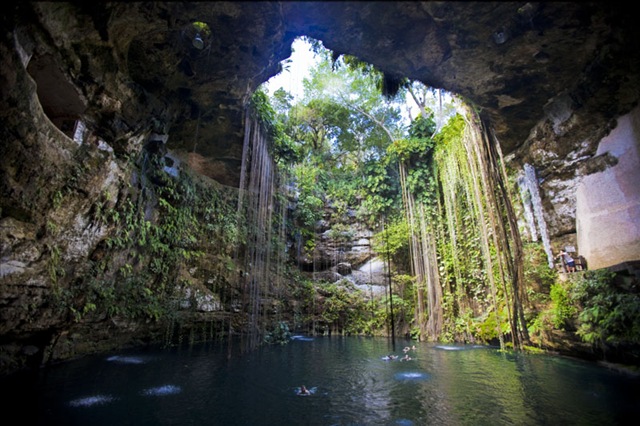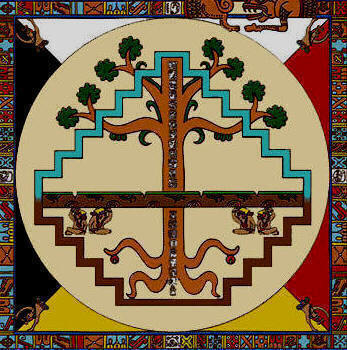Offering human sacrifices to appease the gods, constructing pyramids with mind-boggling mathematical precision and participating in fierce matches of Poc-a-Toc with the possibility of being beheaded at the end of the game, was just another day in the life of the ancient Maya. They are a civilization that has inhabited parts of Mexico, Guatemala, Belize, El Salvador and Honduras for thousands of years, building empires which thrived until approximately the 12th century AD.
Chichén Itzá, considered to be a sacred Mayan mecca, was a significant religious and urban center for the ancient indigenous people. After being colonized around the 8th century by the Itzá, hundreds of thousands of Maya pilgrimaged to the great ceremonial site, which possessed equal prominence as a Central American trade hub. Construction of the first stone buildings began during this time, and over 1000 years later, many of the monuments on the 16 square kilometer archeological site still stand.
Deciding to settle at the Cenote Sagrado (Sacred Cenote) for its abundant water supply, they named the influential settlement, Chichén Itzá, meaning “at the mouth of the well Itzá.” Not only was the great cenote a continuous source of water, it later served as a place of worship. Precious items such as gold, copper and jade as well as the skeletons of young women have since been dredged from the sacrificial well.
According to mythology, the Maya worshipped approximately 250 gods whom it was believed, lived on the peaks of mountains. Thus, grand pyramids were constructed to represent mountain tops where the leaders of the people could commune with the deity. The most awe-inspiring of the many stone structures at Chichén Itzá is “El Castillo” or the castle.
This grand temple was declared one of The New Seven Wonders Of The World for its phenomenal accuracy in depicting the advanced astrological system and calendar of this fascinating people. Also known as the Temple of Kukulkan, each of El Castillo’s four faces incorporate a stairway with 91 steps ascending to the main platform at the top. With the addition of this main platform, there are 365 steps in total, one for each day of the year. Moreover, on the facing of the 9 tiers, are 52 stone reliefs which represent the cycle when both the solar and religious calendars would re-align.
What is truly spectacular is the special effect which occurs during the spring and fall equinox. As the sun begins to set on these two particular days every year, a shadow is cast which gives the illusion of a massive snake slowly slithering down along the side of the pyramid. Approximately 5 hours later, it connects with a serpent head at the base of the structure. Spectators travel from around the world to witness this marvelous scene.
Also on the mystical grounds, is The Great Ball Court where players would demonstrate their extreme athletic skills by hitting a heavy, rubber ball, usually with their hips, through one hoop which was fixed high on the wall of each side of the court. Rendered in the stone relief panels near the ball court are hieroglyphics which depict two teams of 7 with one team member holding one of the opposing team’s decapitated head! It is unclear whether the severed head belonged to the captain of the winning team or losing team. In either case, athletes feared not, as being sacrificed meant they would receive a direct path to live infinitely amongst the gods in the upper spiritual world.
Other notable landmarks on the impressive ruin site are the Caracol, or the spiraling snail monument which was used as an observatory, and the Temple of a Thousand Warriors. On these hundreds of columns, are carved the images of Toltec warriors, some of which still faintly display the original paint.
To walk the grounds and view these masterpieces, one cannot help but wonder why this superior cult consisting of remarkable mathematicians, architects, painters, sculptures, astrologists, and linguists abandoned what was at the time, one of the most flourishing centers of the Mayan empire. Will persistent archeologists and historians be able to piece the puzzle and discover the factors which eventually led to the Classic Maya Collapse, or is the secret buried forever with the ancient people who last roamed over this sacred land? Are the answers carved in the stones? Only time will tell.














